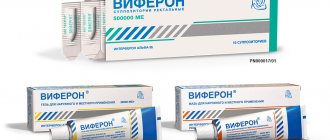Photophobia symptoms
Photophobia can manifest itself in the following signals:
- squinting eyelids even in conditions of
In this article
Photophobia symptoms
- Causes
- Photophobia as a symptom
- Diagnosis and treatment of photophobia
dim lighting;
Photophobia is often accompanied by headache and dizziness, the effect of sand in the eyes, and a gradual deterioration in visual function. The presence of photophobia can be determined independently by these symptoms, but you should consult a doctor for an accurate diagnosis and prescription of corrective therapy.
Causes of headache, nausea and vomiting
This set of symptoms manifests itself in various disorders associated with intoxication, organic brain damage and other pathologies. In rare cases, nausea, vomiting, and headache occur with severe fatigue or physical or mental stress. However, more often these symptoms indicate serious diseases, and it is important to carry out a differential diagnosis. The doctor needs to know the exact location of the source of the headache, the time and conditions of its occurrence, and the frequency of the attack.
Poisoning
Poisoning is the result of poisons and toxins entering the body. They can penetrate with food or inhaled air, through the skin and mucous membranes. These substances reach the bloodstream and affect the central nervous system. The main symptoms of poisoning are a sharp deterioration in health, headache, nausea, vomiting, and disruption of the digestive tract. If measures are not taken in time and the flow of toxins into the body is not stopped, there is a danger of severe damage to the brain and other organ systems.
There are several types of poisoning:
- food - the most common type, includes infectious and non-infectious;
- alcohol and drug poisoning;
- intoxication with acids or alkalis;
- carbon monoxide poisoning and toxic chemicals;
- bites of poisonous animals and insects.
To provide timely assistance, it is important to know what substances caused the intoxication. So, in case of food poisoning, it is enough to rinse the stomach with plain water, or with the addition of soda. However, in case of acid poisoning, washing soda is contraindicated - it is useful to drink milk, butter and other products that have an enveloping effect.
Migraine
An attack of headache that occurs periodically without a specific reason is a migraine. It can develop with changes in weather and climate, with fatigue and hormonal imbalance, with stress and tension. Classic migraine occurs in several stages, each of which is characterized by a specific set of symptoms.
- Prodromal period - begins several days before an attack of acute headache. The patient often feels nauseous, experiences apathy, lack of appetite, fatigue and constant irritation.
- The “migraine aura” takes from 5 minutes to several hours before the headache appears. This is a set of symptoms that immediately precede an attack. The patient is worried about nausea, vomiting begins, vision and hearing deteriorate. In some cases, hallucinations are possible.
- A headache attack can last from several hours to several days. The pain intensifies, but then subsides again. It often appears only on one side, manifested by pulsation in the temple, eye and forehead.
Headache and nausea occur less frequently in men than in women. At risk are patients over 50 years of age, as well as those whose close relatives have similar symptoms. To treat migraines, special groups of drugs are used - conventional painkillers are ineffective.
Increased blood pressure
Hypertension is a chronic disease in which blood pressure levels increase. Normally they are within 120/80 mm. rt. Art. The disease develops with various vascular pathologies, weakness of the heart muscle, as well as with metabolic disorders. Elderly people and overweight patients are at risk. A sedentary lifestyle, poor diet and bad habits can trigger the development of hypertension.
During an attack, characteristic symptoms appear:
- severe headache, nausea and vomiting;
- deterioration of hearing and vision;
- dizziness, possible fainting;
- redness of the skin and mucous membranes.
Patients with chronic hypertension are prescribed medications to correct blood pressure levels. A special diet and light exercise regimen are also recommended. If this condition is not stopped, the load on the heart and blood vessels increases. This is dangerous due to a decrease in the elasticity of the arteries, their ruptures and the development of hemorrhagic stroke.
Reduced pressure
Hypotension is a decrease in blood pressure. The condition is no less dangerous than its increase; it can occur in a chronic form. During an attack, the patient has a headache, feels nauseous and vomits. The skin and mucous membranes are pale. Characteristic symptoms are dizziness, fainting, hearing and vision impairment.
Hypotension is a dangerous disorder that can occur against the background of a number of diseases:
- varicose veins, vein thrombosis;
- insufficiency of the thyroid gland;
- pathologies of certain brain structures (pituitary gland);
- heart disease;
- taking diuretics (diuretics) and other drugs that accelerate fluid excretion or have a vasodilating effect.
A dangerous consequence of hypotension is a deterioration in blood supply to the brain. If there is insufficient supply of oxygen and nutrients to certain areas of the brain, ischemic stroke may develop. At home, you can measure your blood pressure yourself and control it with diet and medications prescribed by your doctor.
Neurological disorders
A possible cause of headache, nausea and vomiting is various diseases of the central nervous system. They include injuries, diseases, and neoplasms that cause disruption of blood supply and nutrition to certain parts of the brain and can lead to dangerous consequences.
- Traumatic brain injuries are accompanied by concussion, vascular damage, and the appearance of hematomas. If after a blow or fall you feel nausea and headache, hearing and vision impairment, you should consult a neurologist. In addition, long-term consequences of injuries can appear after a long time.
- Brain tumors are a dangerous condition that can affect the patient’s quality of life. Tumors have different origins and are formed from nervous tissue, nerves and meninges. Some of them represent primary neoplasms, the rest are metastases from distant organs.
- Cysts are pathological formations that are a capsule filled with fluid. They put pressure on nerve tissue and blood vessels, thereby impairing blood supply and nutrition to certain areas of the brain. There is also a danger of rupture of the cyst with the release of its contents into the surrounding tissue.
- An aneurysm is a vascular pathology in which a pocket forms on an artery. The wall of the vessel becomes weak and inelastic; with increased loads and increased blood pressure, it may rupture. In the early stages, it is enough for the patient to undergo examinations, dose loads and take medications to improve blood supply to the brain. In some cases, surgical removal of the aneurysm is indicated.
Treatment of neurological diseases is carried out taking into account the history, duration and nature of the injuries, as well as the clinical picture. To confirm the diagnosis, an MRI or CT scan of the brain is required. In most cases, drugs are prescribed to restore cerebral circulation. Neoplasms can be removed surgically if they tend to grow rapidly and become malignant.
Meningitis
If an acute headache is accompanied by nausea, vomiting, deterioration of health and fever, this indicates the development of meningitis. The disease is an inflammation of the membranes of the brain, often occurring in an acute form with complications. There are several types of meningitis, which differ in causes, nature of the course and require different treatment methods:
- serous (viral) - non-purulent inflammation caused by enteroviruses, polio, mumps and other viral infections that enter the body with water and food, tick bites and insects;
- tuberculosis - a specific type that can manifest itself in the presence of a tuberculosis focus;
- meningococcal (bacterial) - transmitted from an infected person to a healthy person, also causes damage to the kidneys, liver and other organs;
- protozoal - the causative agent is Toxoplasma, which is found in raw meat and offal.
Treatment of meningitis is selected individually. The main stage remains a course of antibiotic therapy, regardless of the causes of the disease. Painkillers, specific antiviral drugs, and symptomatic therapy are also prescribed. It is important to prevent further spread of the virus and promptly limit the patient’s contact with others.
Stroke
A sharp deterioration in health, vomiting, nausea and headache without fever are typical signs of a stroke. It is an acute cerebrovascular accident. As a result, necrosis of nerve tissue occurs with cessation of the function for which they are responsible. There are two main types of stroke:
- ischemic - occurs against the background of insufficient oxygen supply to the brain, as a result of a decrease in pressure or blockage of an artery;
- hemorrhagic - develops when a vessel is damaged and hemorrhage forms in the brain tissue.
The prognosis for ischemic stroke is more favorable, especially if you seek medical help in the first 2 hours after your health deteriorates. With the hemorrhagic type, the prognosis is questionable. It depends on the size of the damaged vessel, the volume of hemorrhage, the clinical picture and the age of the patient. Some functions of the nervous system can be restored, but many patients are left with long-term consequences in the form of impaired motor activity and speech, memory loss and other symptoms.
It is important to remember that a stroke does not always manifest itself with severe symptoms, acute pain and loss of consciousness. It is important to test at home if headache, nausea and vomiting occur for no apparent reason. The victim will not be able to raise both arms to the same height, repeat simple sentences and smile while maintaining facial symmetry. Another typical sign is the lack of reaction of one of the pupils to light.
Other reasons
Headache, nausea, single vomiting, after which all symptoms disappear, may indicate simple poisoning. If they recur, it is important to determine their cause and provide timely treatment. These include:
- toxicosis during pregnancy is a normal manifestation in the early stages, but should be monitored by the attending physician;
- diseases of the cervical spine (osteochondrosis, intervertebral hernias, pinched nerves - lead to compression of the arteries supplying the brain;
- Chronic fatigue syndrome is a dangerous condition that requires proper rest and medication;
- cyclic vomiting syndrome is a specific disease that manifests itself as attacks of headache and nausea and requires symptomatic treatment;
- inflammation of the inner ear - manifests itself with similar symptoms.
After an attack of acute headache and vomiting, it is important to ensure proper rest and consult a doctor for a more complete diagnosis. It is impossible to carry out full treatment at home.
Causes
- Photophobia can occur for non-pathological reasons:
- a congenital structural feature of the eye with the absence of coloring pigment;
- dilated pupils when using eye drops;
- use of certain medications;
- prolonged work at the computer, which overloads the eyesight and causes dry mucous membranes;
- prolonged stay in the dark;
- the presence of a foreign body in the organs of vision (in this case, photophobia usually affects one eye and is accompanied by cutting sensations);
- exposure to excess sunlight on the retina.
For such reasons, fear of bright light does not indicate the presence of a disease.
But in some cases, photophobia is a sign of the disease, which, in combination with other signs, indicates the true cause of the pathology:
- the presence of an ophthalmological disease (keratitis, conjunctivitis, etc.);
- acute infectious diseases (measles, rubella, meningitis);
- cold viral infections;
- in rare cases - neurological disorders, depressive disorders, chronic fatigue.
Getting rid of photophobia in such situations can only be done by identifying and treating the underlying disease.
Pathogenesis
Hypersensitivity to any kind of light rays - natural or artificial - is usually a sign of disorders in the visual analyzer or nervous system - when the eye cannot perform its functions or the scheme of transmitting and processing information in the brain is disrupted. When a large amount of light hits the retina, neuroregulation must “give a command” that helps reduce contact with light so that the retina is not damaged, for example, narrow the pupil, close the eyelid, or an unconditioned reflex - involuntarily squint. If there are diseases or injuries to the organ of vision, the trigeminal nerve, or foreign bodies, then a “specific” negative reaction to light, even of normal intensity, may occur.
Photophobia as a symptom
By analyzing the compatibility of symptoms, you can guess what pathology caused the appearance of photophobia, but only a doctor can make an accurate diagnosis.
- Photophobia and lacrimation
Their simultaneous appearance may indicate a mechanical injury, a foreign body or substance entering the eye; inflammation or erosion of the cornea; conjunctivitis; influenza or acute respiratory disease; aniridia and other developmental anomalies of the eyeball; inflammation, melanoma or retinal detachment; retinopathy; hemophthalmos; hyperthyroidism; uveitis; migraine; encephalitis, meningitis.
In addition to lacrimation and photophobia, each of these diseases is characterized by a whole list of other symptoms that help the doctor make an accurate diagnosis and prescribe competent treatment.
- Photophobia and eye pain
They can be combined with burns, ulcers, mechanical damage to the cornea, spring catarrh, acute glaucoma, endophthalmitis.
- Photophobia and redness of the eyes
The simultaneous appearance of these signs may indicate injury or burn of the cornea, keratitis, uveitis, conjunctivitis.
- Sun sensitivity and fever
Increased sensitivity to light in combination with a rise in body temperature may indicate meningitis, endophthalmitis, encephalitis, trigeminal neuralgia, hemorrhagic stroke, brain abscess, purulent uveitis.
- Photophobia and headache
This combination is typical for brain abscess, migraine, encephalitis and meningitis, stroke, tension headaches, acute attacks of glaucoma, acromegaly.
- Fear of light and nausea
Typically, nausea combined with photophobia indicates increased pressure inside the eyes or skull, which is typical for diseases such as meningitis, migraines, hemorrhagic stroke, and brain abscess.
- Photophobia and pain in the eyes
Cutting sensations in the eyes with fear of bright light are characteristic of conjunctivitis, keratitis, astigmatism, trigeminal neuralgia, uveitis, blepharitis, ulcers and burns of the cornea.
Diet for photophobia (photophobia)
Diet for eyes, nutrition to improve vision
- Efficacy: therapeutic effect after 2 months
- Timing: constantly
- Cost of products: 1800-1900 rubles. in Week
Nutrition for vision problems should be balanced and capable of providing the body with proteins, fats, carbohydrates, fluids, vitamins and microelements. Approximately the diet should consist of:
- various vegetables, fruits and dried fruits, berries, juices, compotes and herbal teas;
- meat, eggs, fish and seafood;
- porridge and whole grain baked goods;
- In this case, food is prepared by boiling, baking, using a steam or multicooker, seasoned with high-quality natural oils, sauces, herbs, seeds and nuts.
Diagnosis and treatment of photophobia
Therapy for photophobia is based on finding and eliminating the cause of this symptom. The following types of studies help to detect a disease that has manifested itself as photophobia:
- ophthalmoscopy - when performed, the doctor examines the fundus of the eye using a special device;
- biomicroscopy - an ophthalmologist examines areas of the fundus and the vitreous body through a slit lamp for changes;
- perimetry - this method allows you to establish the boundaries of the patient’s field of vision;
- tonometry - a test during which the doctor measures the pressure inside the eyes;
- gonioscopy - involves examining the corner of the eye where the iris borders the cornea;
- pachymetry is a diagnostic test in which the doctor determines the thickness of the cornea;
- Ultrasound of the organs of vision - helps to examine areas of the eye when ophthalmoscopy is not possible;
- fluorescein angiography - during this, the doctor examines the patency of the vessels that feed the ocular structures;
- optical tomography - it is used to detect changes in the tissues of the retina;
- electroretinography is a research method aimed at analyzing the functioning of the retina;
- culture for viruses, bacteria - helps to establish the source of the eye infection.
These diagnostic methods allow the ophthalmologist to name the exact cause of the development of photophobia and other associated symptoms. If ophthalmological examinations show the absence of eye diseases, but photophobia is present, consultation with a neurologist is required. This specialist may prescribe additional diagnostic tests: MRI of the brain, Dopplerography of the cervical vessels, electroencephalography.
If, along with photophobia, signs of hyperfunction of the thyroid gland or diabetic retinopathy were detected, an endocrinologist is involved in treatment. For symptoms indicating a tuberculosis process in the cornea, call a phthisiatrician.
Consultation with an ophthalmologist in case of photophobia is mandatory, but prophylactic wearing of sunglasses, which will significantly reduce the dose of ultraviolet radiation affecting the organs of vision, will help ease its course.
How to prevent the appearance of photophobia?
To prevent the occurrence of increased eye sensitivity to light, doctors advise following a daily routine. It is important that sleep is stable and complete: at least 7 hours for adults and at least 8 hours for children. Daily walks in the fresh air are also recommended, preferably at least 1-1.5 hours a day.
Maintaining personal hygiene of the organs of vision is also an important factor in preventing the occurrence of photophobia. This will eliminate the risk of developing infectious and inflammatory processes in the eyes. Another important component of prevention is a balanced diet. It is important that a person receives the required amount of vitamins, macro- and microelements from food.
With increased visual stress, it is worth regularly performing simple eye exercises every 30-40 minutes of working at the computer. Builders, drivers and representatives of other professions who are often outdoors during the daytime need to wear sunglasses with a UV filter.
On the Ochkov.Net website you can profitably buy contact correction products to improve vision clarity for myopia, farsightedness and other refractive errors.









